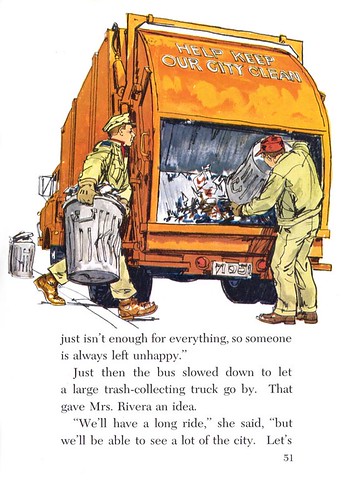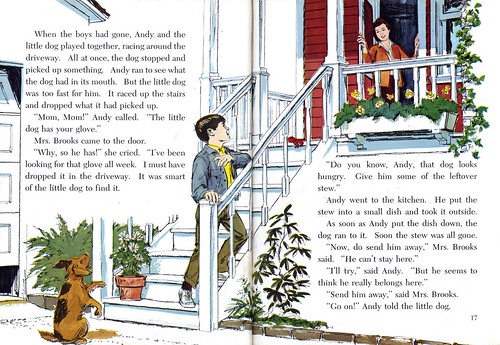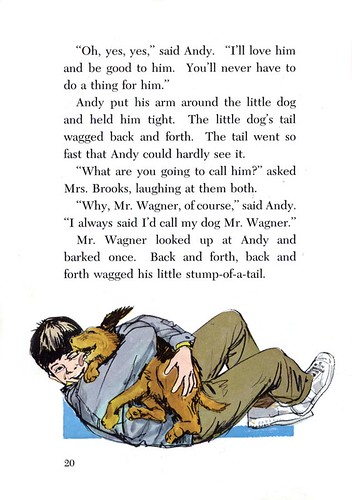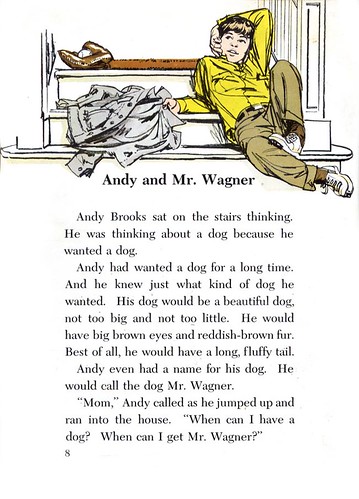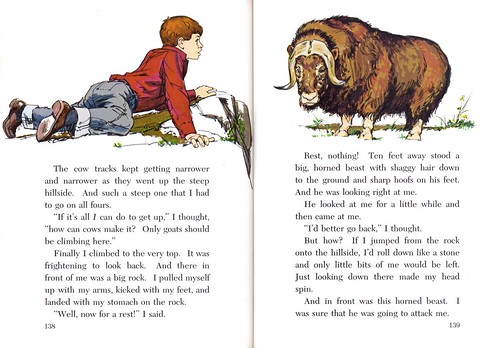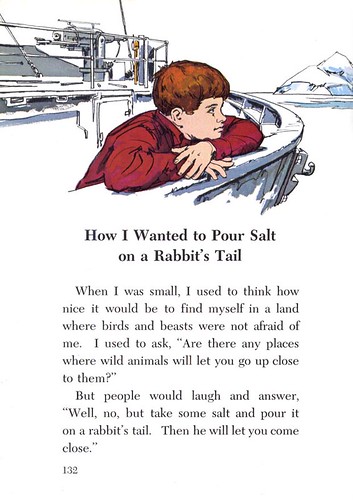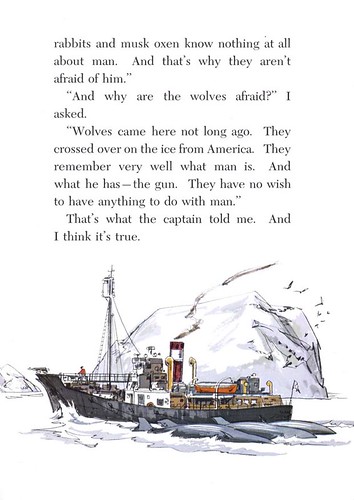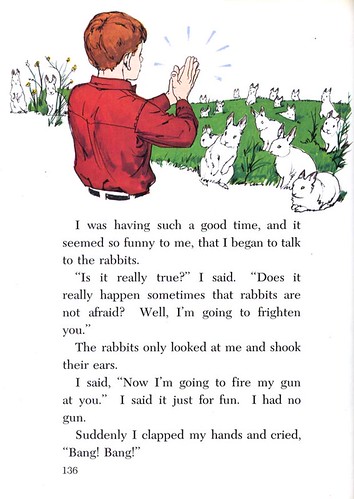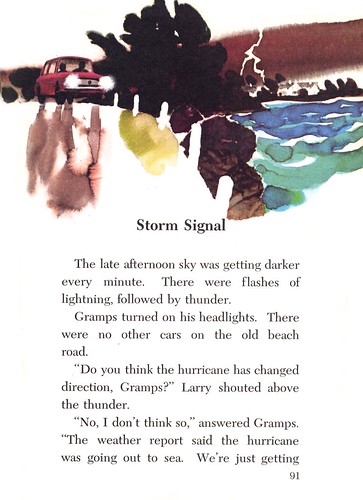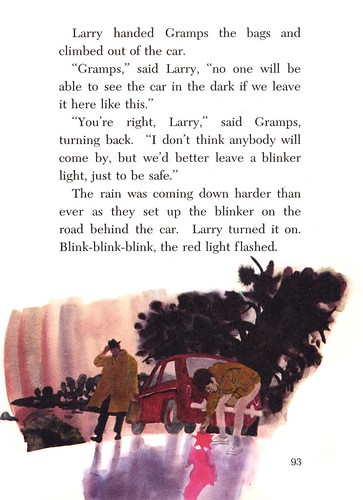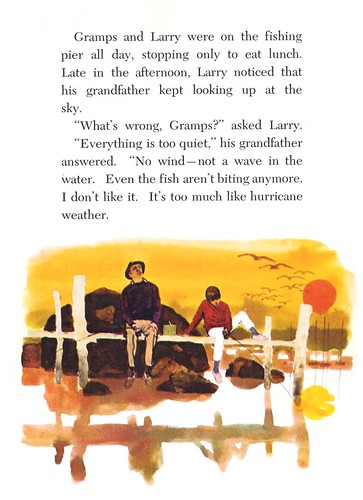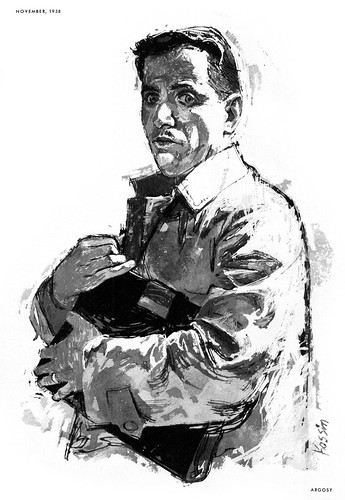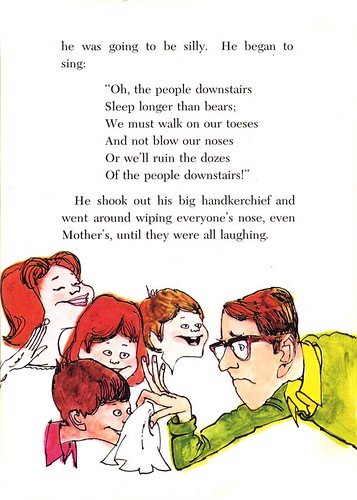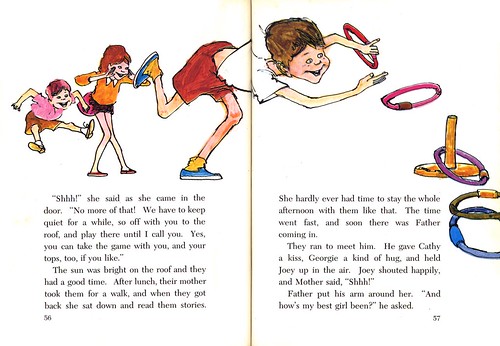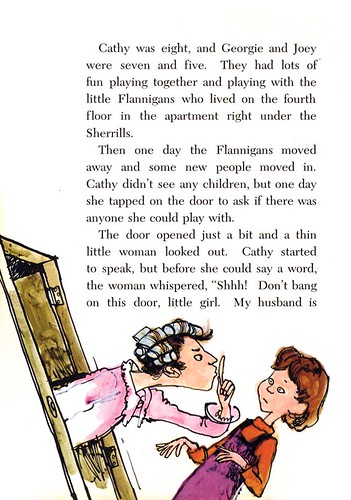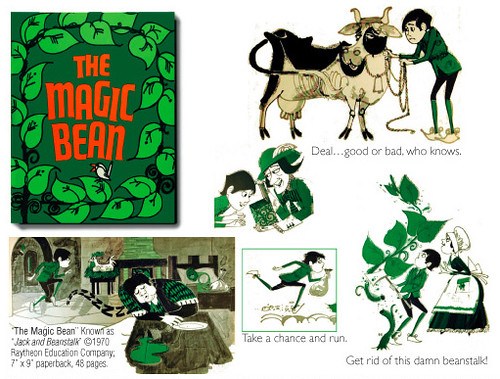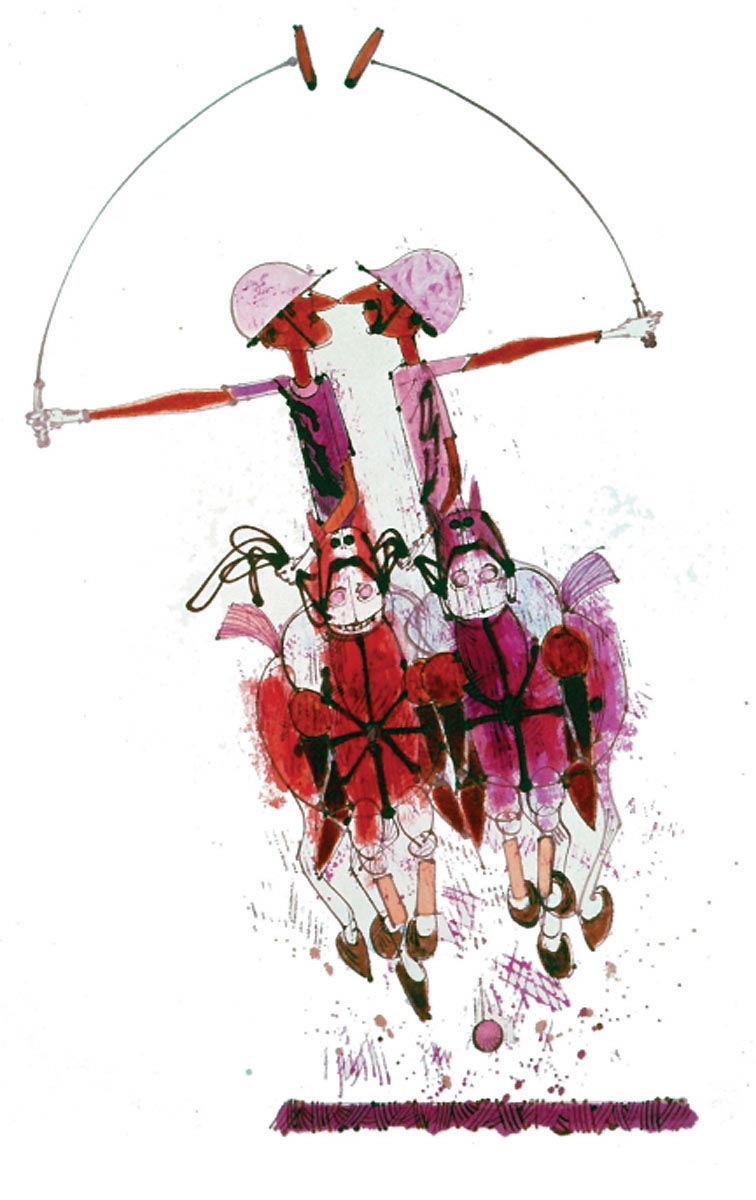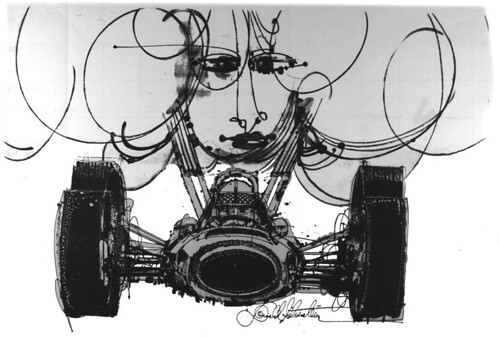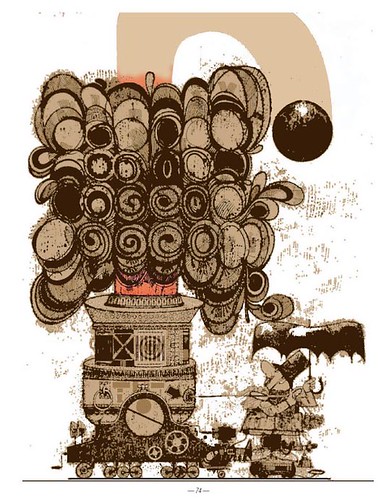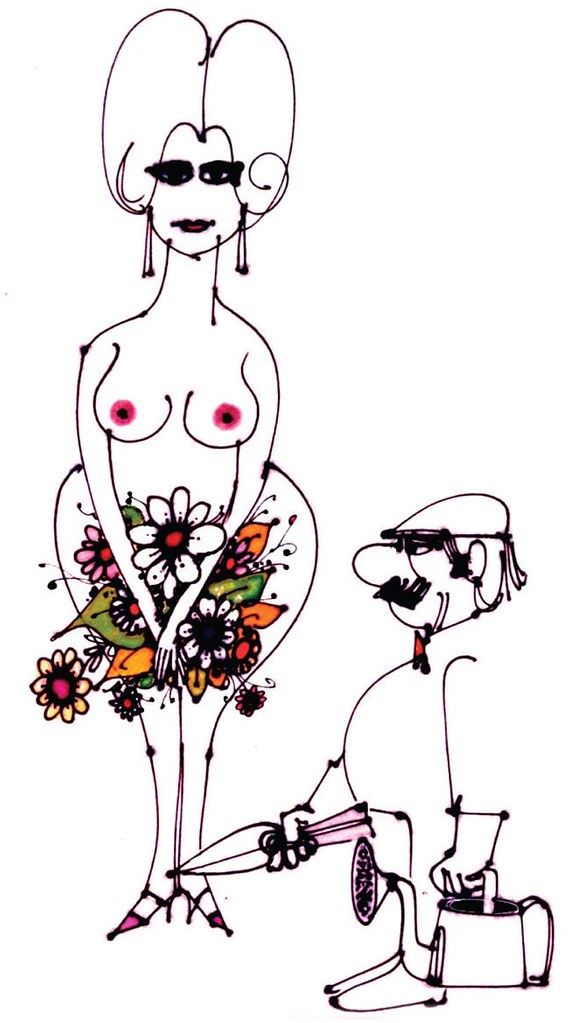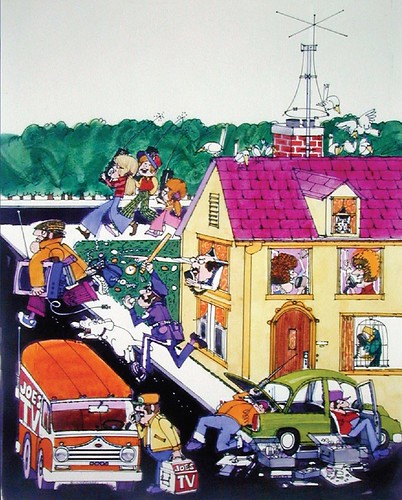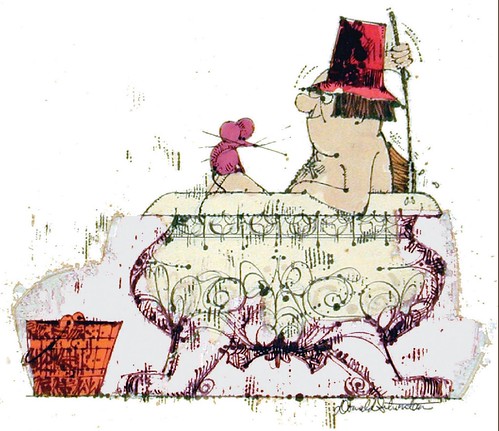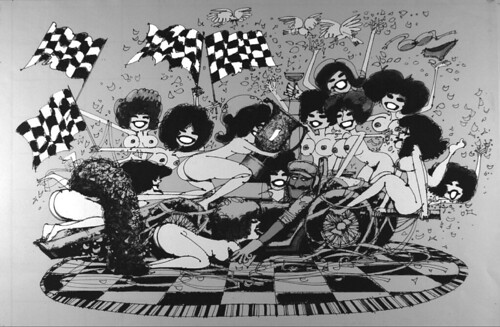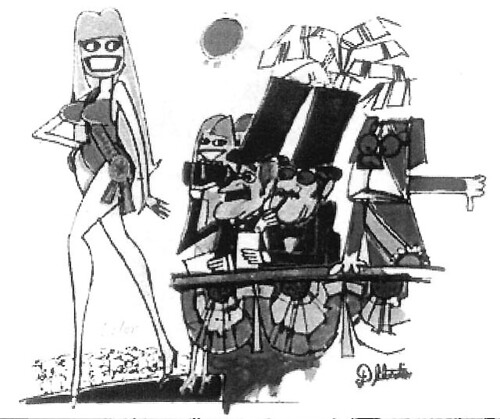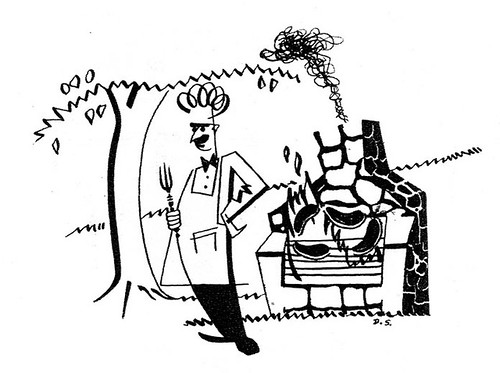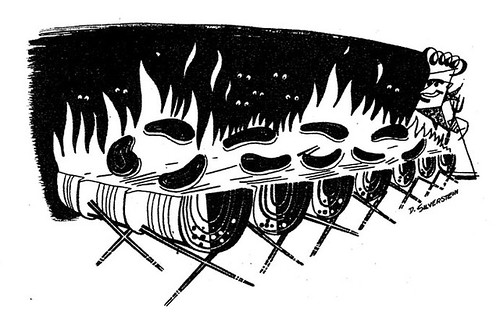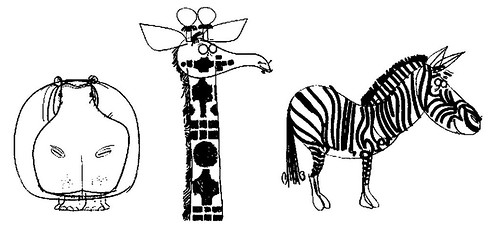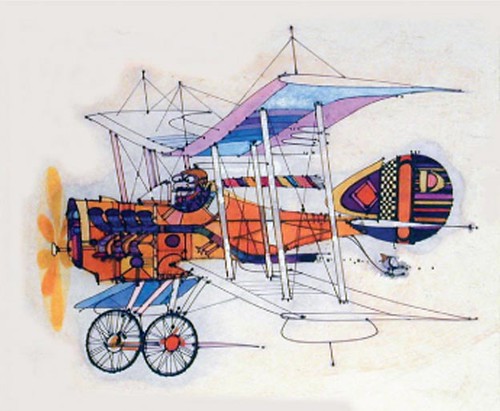Imagine that!

But that's exactly what young Leonard Weisgard did.

"He went on to study art at the Pratt Institute and the New School for Social Research, where he was influenced by primitive cave paintings, Gothic and Renaissance art and avant-garde French illustrators of children’s books of the 1920s." This from the artist's biography at Leonard Weisgard.com.
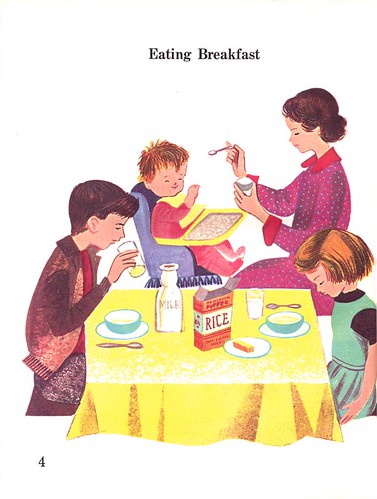
Yes, unlike so many other mid-20th century illustrators, Leonard Weisgard actually has a beautifully comprehensive website. From my reading, it looks to be the loving tribute of Weisgard's children, Abby, Christina and Ethan.

There, along with photos and a thorough biography, you'll find a nice little gallery of Weisgard's illustrations - both storybook and 'commercial art'.
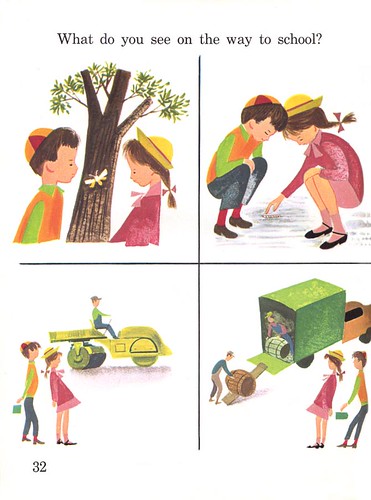
Weisgard illustrated over 200 children's books during his long career, and a well organized bibliography provides an exhaustive list of them (for those collectors who are seeking out rareties).
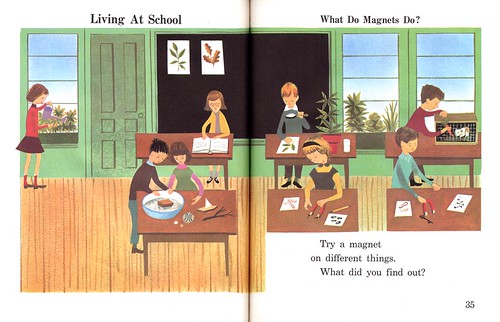
Curiously, I did not find the volume from which these images were scanned listed in that bibliography. These are from Volume 1 of the Macmillan Science - Life textbook series... and the bibliography seems to suggest that Weisgard illustrated Volumes 16 and 78.
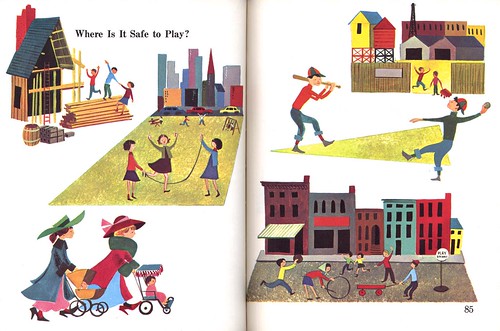
Maybe I'll email the Weisgard children and see if I've uncovered a new addition for their list. If I receive a reply, I'll post it here for the many Leonard Weisgard fans I know are out there.
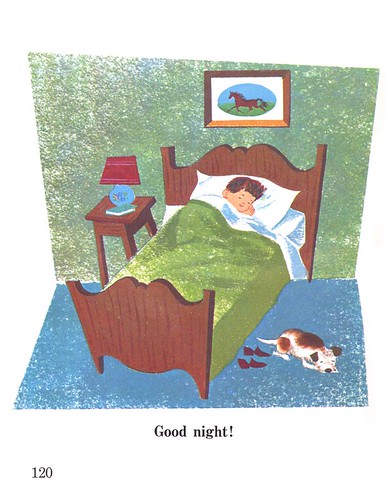
My Leonard Weisgard Flickr set.
*And this is a good time to remind everyone to take a look at The Retro Kid group on Flickr. There you'll find thousands of delightful mid-20th century kid-focused illustrations. But you must join the group (its free) for all the images to become visible. Its a weird Flickr rule too complicated to explain here. Sorry.
